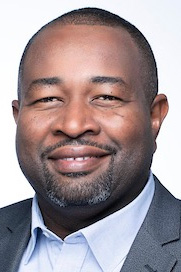


|
||
|
||
 African Undersea Cables – 2014 (Click to Enlarge)This month, France Telecom’s Lower Indian Ocean Network 2 “LION2” fiber optic cable has been put in service, bringing the total number of cables in East Africa to four. In South Africa it is expecting West Africa Cable System to go live next month.
African Undersea Cables – 2014 (Click to Enlarge)This month, France Telecom’s Lower Indian Ocean Network 2 “LION2” fiber optic cable has been put in service, bringing the total number of cables in East Africa to four. In South Africa it is expecting West Africa Cable System to go live next month.
This huge growth in fiber optic cables connecting Africa means that bandwidth costs can go further down but there are many questions for internet service providers, regulators and policy makers on how to ensure the new connectivity/bandwidth can lead to development of online services, ecommerce and other services that rely on good internet connectivity like eLearning and eHealth .
For instance, lower bandwidth costs have allowed internet users to grow from 14 million to 17 million in Kenya in the last quarter of 2011. This has been propelled by mobile internet subscribers but cost is an underlying factor. The same applies to other parts of Africa, in Senegal the number of Internet subscribers grew phenomenally in 2011. There is currently more than twice the number of Internet subscribers than a year ago, this growth was driven by factors like new 3G licenses, the release of cheaper internet services and low cost smartphones.
One of the more notable results of the lower connectivity costs has been the growth of Internet Exchange Points, which allowed more ISPs to exchange content locally without going through international transit providers. The ccTLD registries have also been able to connect directly at the exchange points, improving accessibility to their TLDs.
In a recent study titled “Assessment of the impact of Internet Exchange Points – Empirical study of Kenya and Nigeria” conducted by Analysys Mason and commissioned by the Internet Society, it was revealed that uses of the Internet Exchange Point “KIXP” helped in increase service delivery for .ke which resulted in domain name registration growth.
Most of the African ccTLD has few thousands of domain name registrations and there are many other challenges facing African ccTLD uptake — like registration cost, restricted policies and lack of automation. But a good infrastructure, fair competition and increased Internet capacity means that more people can get online, buy domain names, set up websites and online business. Two of the Africa’s shining examples are Kenya ccTLD .ke with about 22,000 domains and South Africa .ZA is leading Africa’s name space with over 700,000 domains under .za.
dotAFRICA, Africa’s new gTLD project will also benefit from the growth of Africa’s infrastructure and internet users huge growth. Due to nature of Africa internet issues the project will contribute to the development of Africa’s Internet ecosystem through the establishment of dot Africa Foundation, more efforts directed to ccTLDs, registrars and Internet content services development in Africa.
Resources:
1. Africa’s current Sea Cables
2. ISOC’s Assessment of the impact of Internet Exchange Points – empirical study of Kenya and Nigeria
3. Senegal’s telecommunications regulator, ARTP, recently published an annual report for 2011.
Sponsored byDNIB.com

Sponsored byIPv4.Global

Sponsored byRadix

Sponsored byVerisign

Sponsored byWhoisXML API

Sponsored byCSC

Sponsored byVerisign
